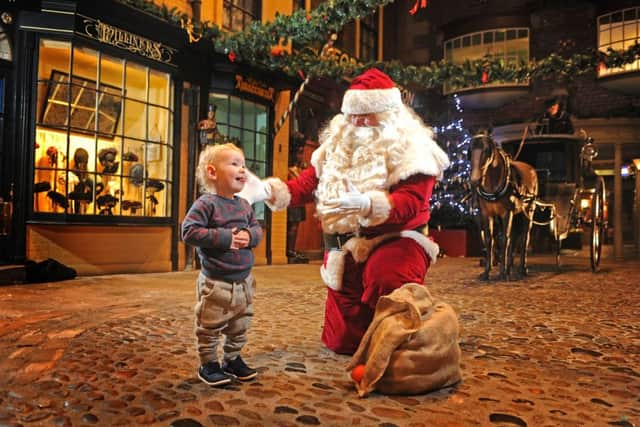Christmas is getting so commercial '“ even the Victorians thought so
The arrival of mass production and the proliferation of printed advertising posters – not to mention the new trend for fir trees that Prince Albert had imported from Germany – conspired to make well-to-do families in the mid-19th century hanker for simpler times.
The era is recreated within the Castle Museum at York, whose model Victorian street, Kirkgate, was the creation of its founder, John Lamplugh Kirk, a local GP with a passion for collecting ephemera.
Advertisement
Hide AdAdvertisement
Hide AdIts seasonal exhibit sees the trees hung with presents and evergreen garlands in the Victorian style, and visits with Father Christmas that recall the first recorded Santa’s Grotto, in east London in 1888.


Yet despite the trimmings, the Victorian holiday season was not the picture perfect occasion worthy of the lid on a tin of Quality Street.
Sarah Yates, assistant curator of history and learning at the museum, said Christmas in the 19th century was a predominantly middle-class affair, and that poor children could expect little more than fruit, nuts and home-made toys of clothes peg dolls with painted faces and clothes made from scraps of fabric.
“The Victorians soon started to complain about the commercialisation of Christmas,” she said. “They thought there was too much advertising and too many pamphlets. Very much the sort of thing we hear today.”
Advertisement
Hide AdAdvertisement
Hide AdChristmas was declared a public holiday in 1834, shortly before the Queen’s consort put up the first tree in the Palace, and about the same time that Christmas cards became commonplace.
“We are trying to recapture the spirit of that era, in which the modern Christmas has its roots,” Ms Yates said.
The event, which also features authentic Victorian recipes for gingerbread and spiced cake, is open until New Year’s Eve.